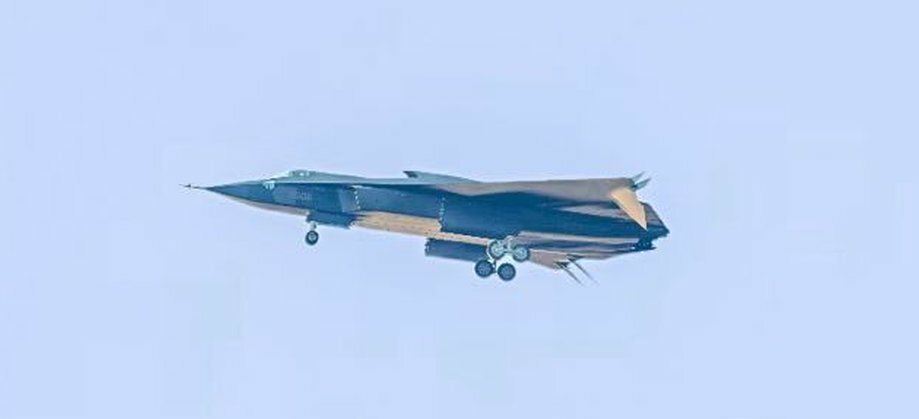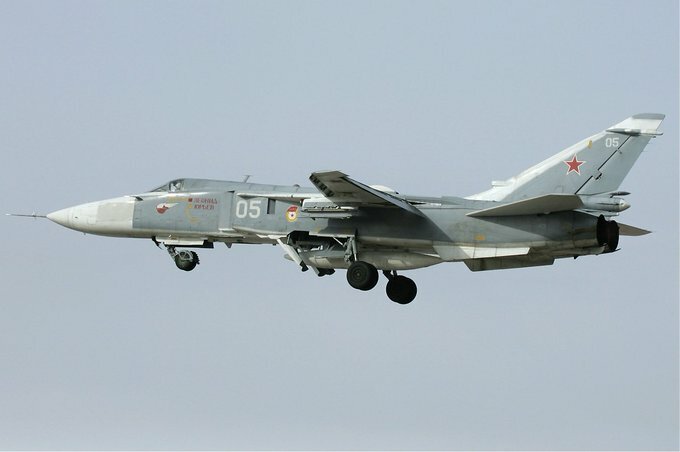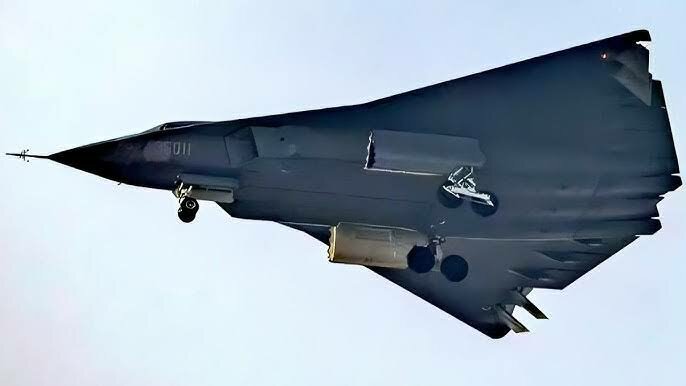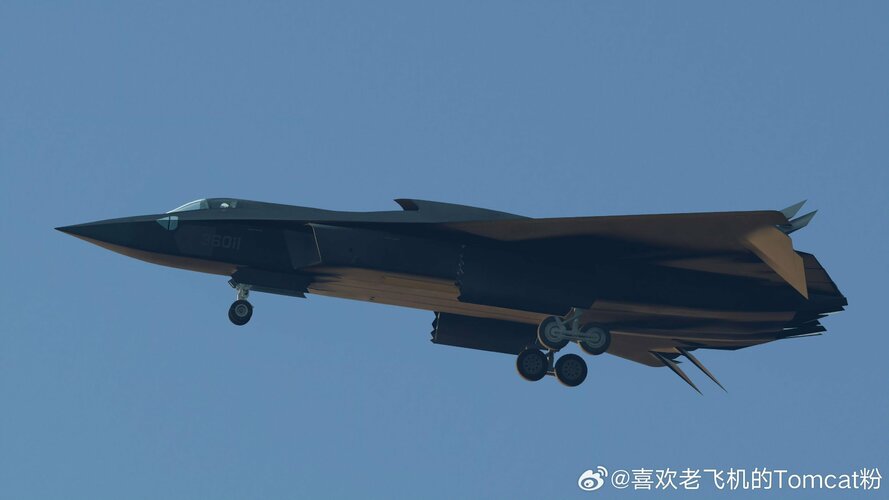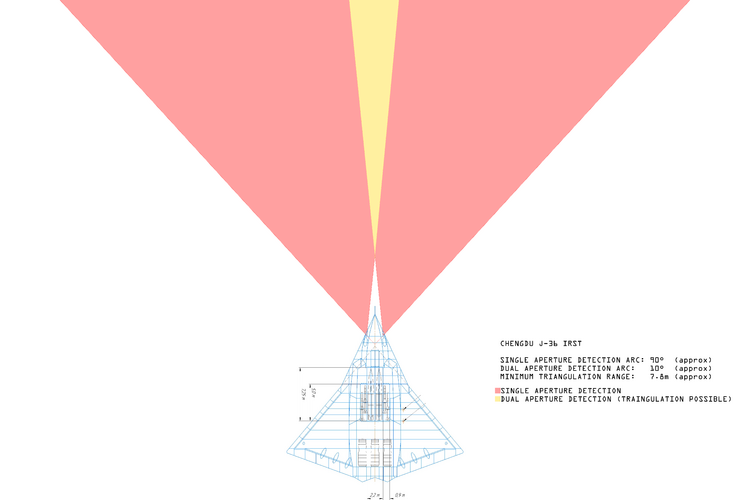So I tried doing something but I'm not sure how accurate it is so I want your opinion on it.
Using paralay's drawing for this, hope it's ok for me to use it.
The dual windows on either cheek have been bugging me since I saw them so I tried to see how viable they would be if they are IRST windows as I think they might be. My logic is since a single IRST sensor isn't capable of producing weapons grade triangulated tracks then maybe the J-36 uses dual IRST apertures to triangulate the bearing, range and altitude of an aerial target thus allowing it the ability to target an enemy aircraft completely passively.
Using paralay's drawings, I was able to come up with this:
View attachment 756923
If the windows actually house IRST sensors in either side then it will allow the J-36 approximately a 90° arc (Red shaded arc) to detect aerial targets. Furthermore if the target is within the central 10° arc (Yellow shaded arc) then the aircraft will be able to not only detect the target but triangulate it's bearing, range and altitude through only passive IR emissions, allowing the jet to engage targets in complete stealth.
Considering that the
Gripen-E has a claimed 300km to 500km detection range for an aerial target with its IRST but requires another Gripen to triangulate the track, a J-36 with such a capability will be very difficult problem to deal with.
Do you guys think this is a capability that the J-36 has or do you think that this is something different?


